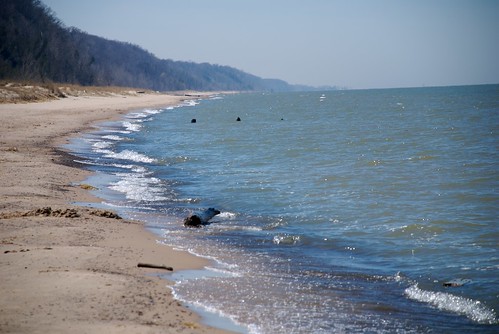This guy was in needs some serious TLC.
Search This Blog
Monday, February 28, 2011
Sunday, February 27, 2011
Adam_King_Studio
About Adam
People often ask me, “What do you do?” Well, what day is it? Depending on the day, I’m either a studio furniture maker, antique restoration specialist, teacher, designer, or part time bike enthusiast. So, how do I explain this to someone? Usually, I say something like, “I make furniture.”
In reality when you take your passion and make it a lifestyle, you become so much more than just a _______ (fill in the blank). You are everything that encompasses that lifestyle. You take on the roles that help define your passion. The Japanese have a word, “shokunin,” that roughly means artist – craftsman. It’s a term to describe one who not only makes their art or craft, but also lives their art. It’s not just a description, but more of a goal to strive for – to attain a oneness of mind, body, and spirit, and communicate that oneness through the work.
So, I guess, that’s where I’m at in my pursuit of this art and this craft. Now, how do I sum that up for all those small -talkers out there?
I’m a native son to Olney, IL where my family has owned a retail furniture business for over 80 years.
I left the retail furniture world for the studio furniture world and studied Fine Furniture Making independently for five years before attending the Worcester Center for Crafts in Worcester, MA under the Fine Woodworking and Antique Restoration and Conservation programs.
In 2004, I returned to Olney and founded Adam King Studio, a small shop specializing in custom studio furniture and antique restoration. The Studio is located in an historic building once used by the St. Louis Shoe Company in Olney, IL.
The work is executed to exacting standards. Traditional joinery and hand tools are employed to achieve the highest level of craftsmanship and integrity, to ensure that each piece stands alone as an object of distinction. I am heavily influenced by the tools, techniques, and traditions of old world craftsman, in particular, that of the Japanese. I am constantly seeking to employ these methods in to the process.
Reclaimed or sustainability harvested lumber is used as much as possible. I believe in my responsibility to lessen the impact my work has on our environment. Beyond that, though, each piece of lumber that has been reclaimed for future use has a story to tell that is all it’s own. I believe this enhances the character and emotion that is contained within the piece.
The designs are taken from a myriad of my influences. Japanese architecture, Arts and Crafts pieces, nature, Danish modern; these all play a part in designing a piece that reflects not only the influences it comes from, but also a “quiet elegance” that will enhance the space in which it resides.
“The precious part of a product is the part put into it by the craftsman.” – Charles Rohlfs
Hagar Park, Lake Michigan
A quick stop off of *US-33 and your here. Ready for a swim? A Barbeque? How about just a quiet afternoon overlooking the lake with your kids and some carry-out from a local diner. We are fans of this park because you have just the right ammenties to make it an enjoyable visit. And when your ready take a long dip in the beautiful Lake Michigan on you scenic walk down the bluff.
*Historical Overview
As noted above, US-33 only ran a short distance in Michigan, never leaving Berrien County and never longer than approximately 35 miles. While longer than the tiny portion of US-8 in the Upper Peninsula, this highway was also concurrently signed with other routes for much of is existence. In fact, it remains unclear why US-33 was designated in Michigan in the first place! Also interesting to note, every mile of of what had been designated US-33 is still a state trunkline to this day, so decommissioning was not due to a transfer of any segment of roadway to local control.
US-33 debuted in Michigan in the late-1930s, almost a decade after the rest of the U.S. Highway system was created and signed. It was created as an "angling" highway running from Virginia northwesterly through West Virginia, Ohio and Indiana, then into Michigan. US-33 replaced the existing Indiana SR-2 from Fort Wayne to Elkhart, then westerly into South Bend to US-31. At this point, South Bend, Indiana would have made a perfectly logical terminus for the highway. However, for some reason, transportation officials continued US-33 northerly from South Bend via the existing US-31 through Niles, ending in downtown St. Joseph. It could be assumed officials felt Lake Michigan to be a more desirable terminus instead of South Bend, although that hypothesis is purely conjecture.
For nearly 25 years, US-33 ran concurrently with US-31 for its entire length in Michigan, from the state line between South Bend and Niles to its northern terminus in downtown St. Joseph. Only with the coming of the Interstate highway system was US-33 destined to be signed on its own. In the early-1960s, US-33 was extended northerly along US-31 to northernmost Berrien County to take over the route for when US-31 is moved over onto the new freeway bypass of the Benton Harbor area. Thus, US-33 is routed solo for the first time in its history in Michigan, although that was not the original intent. When US-31 was first relocated to the I-94 and I-96 (now I-196), the route of US-33 through St Joseph was initially co-signed with a BUS US-31 ("Business US-31") route designation, leaving US-33 completely co-signed with other routes, as it had since it was first commissioned in the state. The BUS US-31 designation, however, was soon removed.
Another 25 years would pass before another major change came to US-33, this time a drastic shortening of the highway scaled it back to US-12 on the south side of Niles. This left the highway as a shadow of its former self, running only 2.83 miles in the state. Another decade passed before the remainder of US-31 in Michigan, as well as the portion through South Bend and Mishawaka, Indiana easterly to Elkhart, was decommissioned. The purpose for this major change was to allow the Indiana Department of Transportation to remove the route of US-33 along the Elkhart-South Bend stretch. This could not be done without MDOT going along with the plan and similarly decommissioning their portion of US-33. This was done in 1998 and the last portion of the highway in Michigan was redesignated as an extension of M-51.







